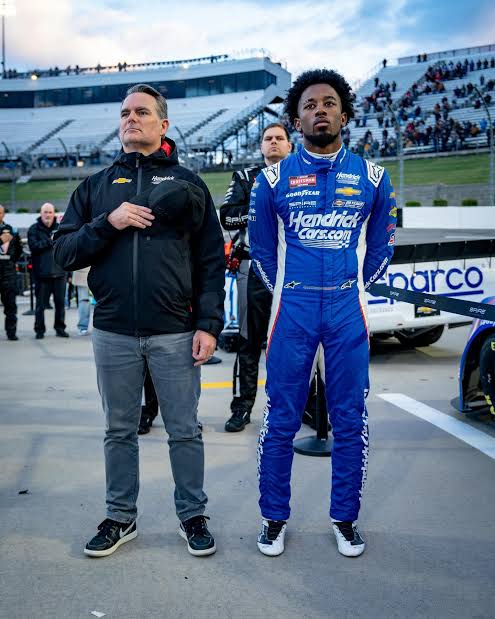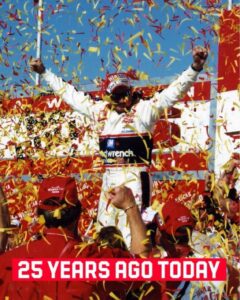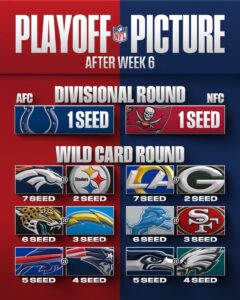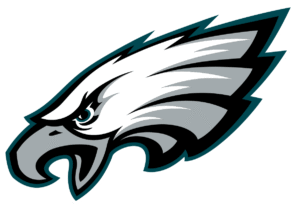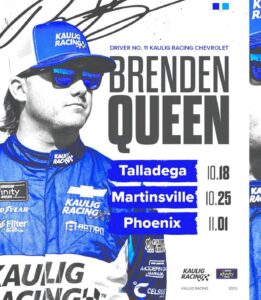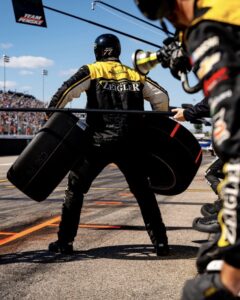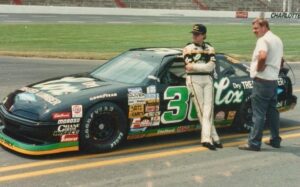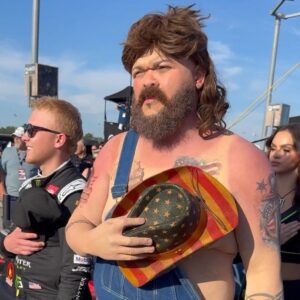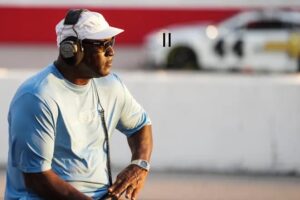In sports, athletes often become symbols of national pride, representing their countries in various arenas. For American athletes, standing for the National Anthem has traditionally been a moment of respect and patriotism. However, when Rajah Caruth, a rising star in the NASCAR world, chose not to hold his hand over his heart during the playing of the National Anthem at the Martinsville race, it sparked a wave of conversation and speculation. Understanding the context and reasoning behind Caruth’s decision is key to grasping the larger implications.
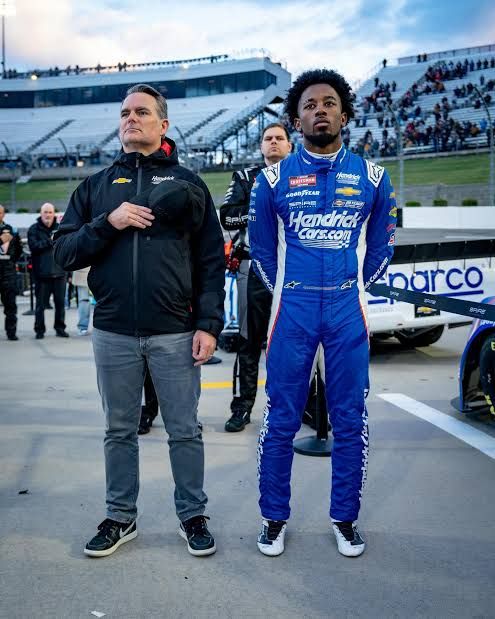
The Gesture: Not Holding His Hand Over His Heart
During the pre-race ceremonies at Martinsville Speedway in the NASCAR Xfinity Series, Caruth, like many drivers, was on the track for the playing of the National Anthem. Unlike most of his peers, who placed their hands over their hearts, Caruth remained with his hands by his side. This action quickly caught the attention of fans, commentators, and others in the NASCAR community.
While this may seem like a small act, in a world where athletes’ gestures are scrutinized, it became a focal point for discussions about patriotism, protest, and personal beliefs. To fully understand Caruth’s decision, it’s important to explore both the personal and societal contexts that could have influenced it.
Caruth’s Background and Perspective
Rajah Caruth, an African American driver, has often been vocal about social justice issues, particularly those surrounding race and inequality. In an era where athletes like Colin Kaepernick and others have used their platforms to draw attention to issues of racial injustice, Caruth’s choice not to place his hand over his heart may have been an expression of solidarity with movements for racial equality or a statement about the state of the country.
Caruth, like many athletes, likely sees the National Anthem as a moment to reflect not only on the values of the United States but also on the realities of those values in practice. For some, the act of standing for the anthem is a symbol of unity and pride in the nation’s progress, while for others, it may be seen as a gesture that overlooks the struggles that many people, particularly people of color, continue to face in the country.
Social Justice and Protest in Sports
Caruth’s decision not to hold his hand over his heart can be placed within a broader context of protests and social justice movements in sports. Over the years, athletes have used their positions to raise awareness about societal issues, from racial inequality to police brutality. Notable figures, like Kaepernick, have faced both praise and backlash for their protests during the anthem.
In a similar vein, Caruth’s choice could be seen as an acknowledgment of ongoing racial issues in America. While some might argue that not placing his hand over his heart is disrespectful, Caruth’s act could also be interpreted as a form of peaceful protest. By not engaging in a standard gesture, he might be attempting to draw attention to what he perceives as a lack of true equality in the country.
Reactions from Fans and the NASCAR Community
The reaction to Caruth’s gesture was mixed. Some NASCAR fans expressed dismay, interpreting the action as a lack of respect for the country and its traditions. NASCAR, traditionally seen as a sport with a strong connection to American values and military support, has been no stranger to controversies involving the National Anthem, particularly after the 2020 season when driver Bubba Wallace became a central figure in the fight for racial equality.
On the other hand, there were also fans and supporters who understood Caruth’s stance, viewing it as an important act of self-expression. Many of these individuals pointed out that protest, even in the form of a small gesture like not placing one’s hand over their heart, can be an important part of the ongoing conversation about race and justice in America.
Conclusion
Rajah Caruth’s decision not to hold his hand over his heart during the National Anthem at Martinsville was a deliberate act that drew attention to the broader conversation about race, justice, and the role of protest in sports. While it may have been controversial for some, it also highlighted the evolving ways in which athletes use their platform to express personal beliefs and challenge societal norms. Whether it was an act of protest or simply a personal choice, Caruth’s gesture serves as a reminder that the National Anthem, like the country it represents, means different things to different people.
As sports continue to reflect the complexities of society, athletes like Caruth are increasingly taking a stand on issues that extend beyond the game itself, encouraging important conversations about the future of race, equality, and respect in America.
